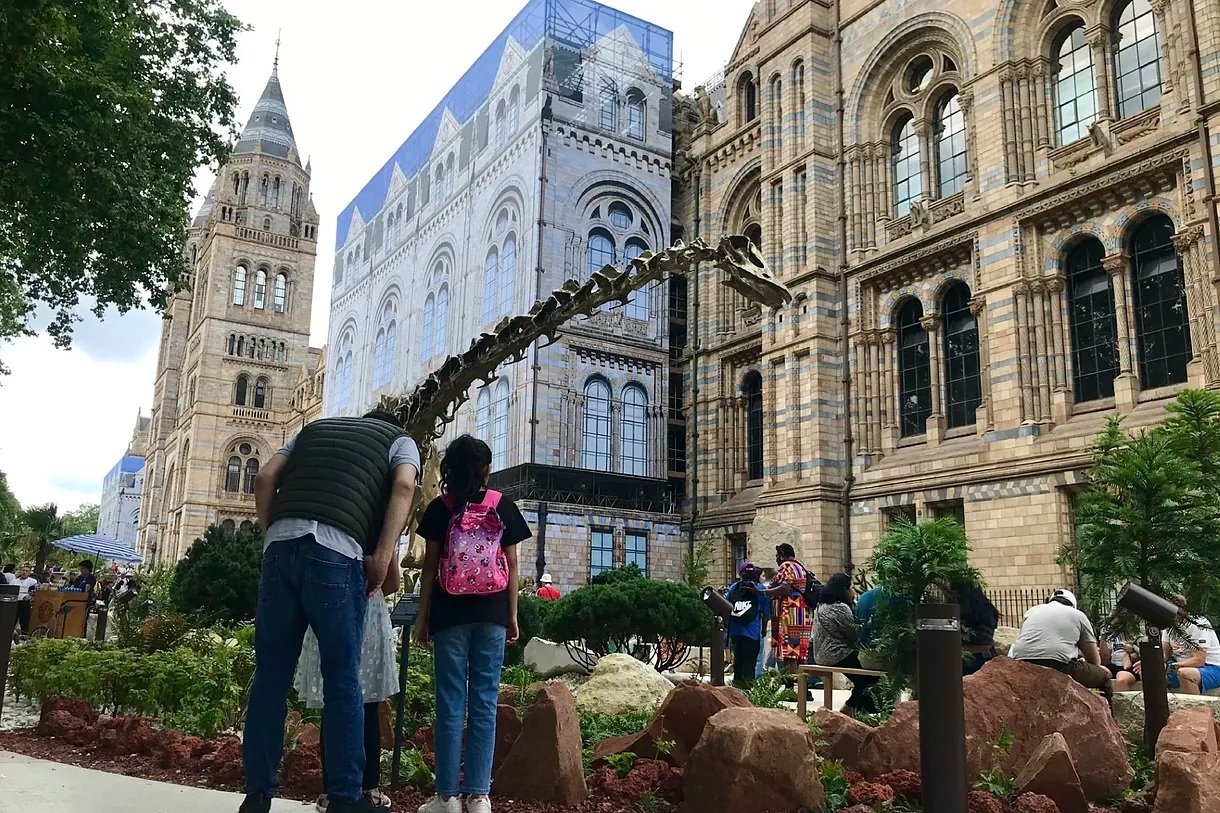Its name is Fern, a close relative of Dippy, the diplodocus that for years welcomed the five million visitors who enter the eerie halls of the Natural History Museum in London every year. Fern is named after the ferns that grow around it, recreating the vegetation of the Jurassic period, about 150 million years ago.
To see and admire the shining relative of Dippy, in the full length of its 27-meter bronze-cast skeleton, you don't even need to enter the museum. Fern greets visitors, young and old, in the so-called Evolution Garden, which recreates the geological eras in the open air.
"We invite visitors to get lost in nature and in the history of our planet over 2.7 billion years," warns Doug Gurr, director of the fascinating museum. "Under the elegant gaze of Fern, our new dinosaur, we want to invite people to fully immerse themselves in the wild world."
The Evolution Garden marks the winding path from the bustling Exhibition Road to the museum's steps, where the Nature Discovery Garden has also flourished, a true living laboratory of urban ecology.
The two projects, under the common umbrella of the Urban Nature Project, have cost a whopping 29 million euros and have served to extend beyond its walls the second biggest tourist attraction in the UK, surpassed only by the British Museum.
"For the first time in 14 years, the gardens surrounding the museum have been completely transformed and reimagined to tell the story of the Earth," emphasizes Alex Burch, director of public programs. "At the same time, we have created a wildlife sanctuary in the heart of London, the ideal place for people to reconnect with nature."
London, the city of a thousand parks
The summer of optimism in the UK with the new political cycle
Let's say that the Natural History Museum has been "renaturalized" and projected in space and time, starting with the Lewisian gneiss rock formations from the island of Barra in Scotland (2.7 billion years). From there, we move on to the slate of Wales (515 million), the sandstone from the Devonian period, or the puddingstone from Herefordshire (55 million).
Among the hard rock, moss, ferns, and conifers make their way, along with chilling reproductions of animal life like the arthropleura, the largest known terrestrial invertebrate (a 2.5-meter long millipede weighing 50 kilos) that lived in the Carboniferous period.
Less impressive but equally surprising is the Hypsilophodon, a mini ornithopod dinosaur just over a meter long, dating back to the middle Jurassic period. About 200 million years ago, in the fossil records, the Megazostrodon appears, an insectivorous and nocturnal proto-mammal, to avoid predatory dinosaurs.
Two gigantic ammonites delight the little ones and help us remember what life was like in the seas before the plastic plague arrived, marking a worrying end to that period that some geologists have already renamed the Anthropocene.
Man has profoundly altered nature, but in the same way, he can help regenerate it. That is the lesson of the second part of the project, the Nature Discovery Garden, with 25 scientific sensors measuring wildlife adaptation to urban habitats. Along the way, with eyes and ears wide open, children end up discovering how the bottom of a pond sounds, what noises a tree trunk holds, or how insects and microorganisms contribute to soil fertility.
